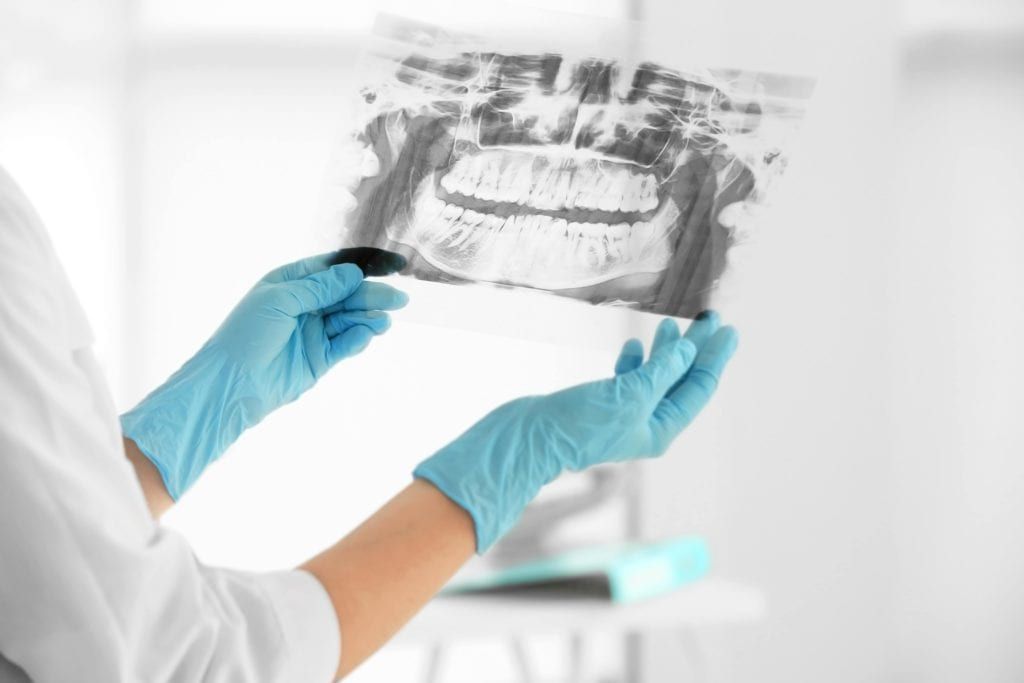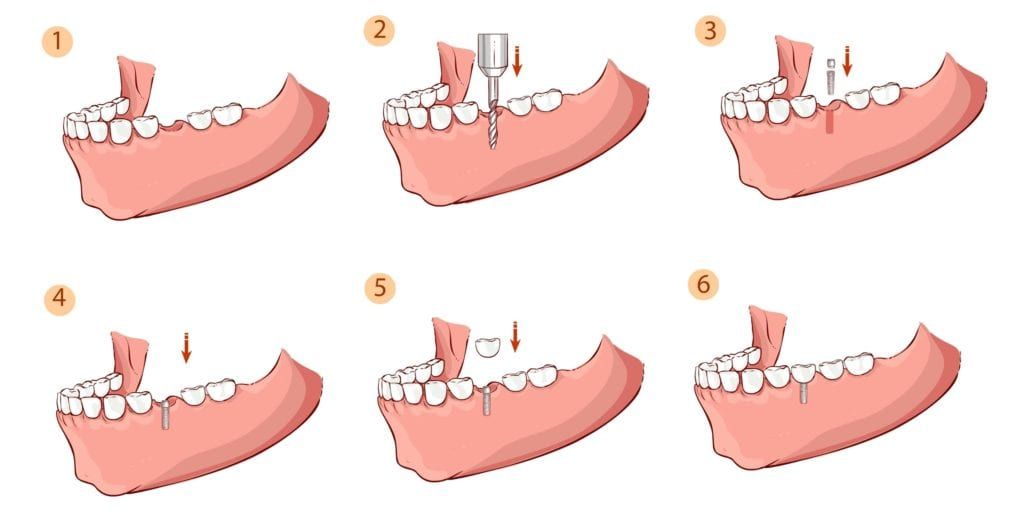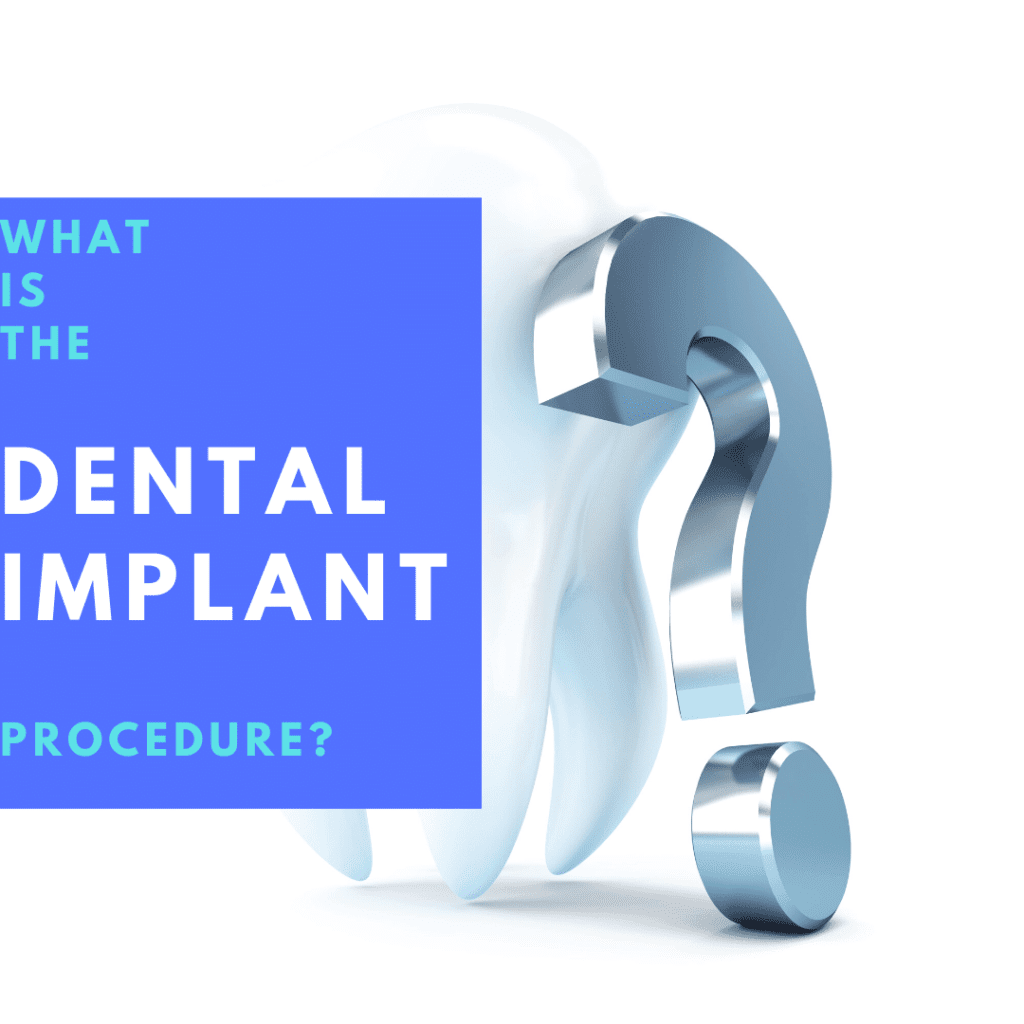Dental implants are one of the top restorative dental treatments for replacing missing teeth. They can be used to replace anything from a single missing tooth to an entire mouth of teeth. For this, and many other reasons, cosmetic and general dentists often recommend dental implants to patients who are good candidates. If you have one or more missing teeth and are considering having a dental implant placed, you may be wondering what the dental implant procedure is.

The dental implant procedure will begin with a consultation to determine if dental implants are right for you. During this consultation, your dentist will examine your teeth and gums, as well as take dental x-rays to evaluate the underlying bone structure. To safely place dental implants, you must have adequate bone mass for the implant screw to fuse with. However additional procedures such as a sinus lift or bone graft may be suggested if you are lacking bone mass.
The next step in the dental implant procedure is to establish a treatment plan. If they haven’t already, your dentist may request a CBCT scan, additional x-rays, or a dental impression to obtain the anatomical information necessary to place your implants. Your treatment plan will be thoroughly discussed with you and any questions you have will be answered to ensure you can make an educated decision regarding your oral health.
Some dentists will also offer a pre-op appointment where they will discuss last minute preparations, as well as prescribe possible medications. They may also discuss sedation options and what to do after your procedure. This information may also be covered when your treatment plan is discussed.
Dental implants are placed using a minor oral surgery. This is because they must be implanted into the jawbone so that they can fuse with the surrounding bone and act as artificial tooth roots. Since the dental implant procedure is considered a minor surgery, you will be both anesthetized and sedated during the procedure.

To place a dental implant, a tiny incision is first made in the gums to expose the underlying bone. The empty tooth socket is then cleaned and shaped for the implant screw. The implant screw will then be screwed into the socket so that it sits entirely within the jawbone. At this point, some dentists may opt to suture up the gums, while others may add the abutment. An abutment is a metal post that connects the implant screw to a dental prosthetic. If the abutment is placed during the same procedure as the implant screw, then a small metal post will stick out of the gums. The gums will then be sutured around the post and left to heal.
In some cases, the dental prosthetic may be attached as well. This is known as immediate-load implants. However, immediate-load implants do not automatically mean that they can immediately withstand a lot of force. Once the implants have been placed, it will take about 3-6 months for them to fuse with the surrounding bone in a process known as osseointegration. During this time, it is extremely important to follow your dentist’s instructions to ensure the implants do not shift or fail.
As you can see, the dental implant procedure has many important steps. Starting with the consultation and treatment plan, all the way to the post-procedural care, getting dental implants is a process. However, all these steps increase the likelihood of implant success and minimize the risks. And once the process is finally over, you will have a beautiful smile with artificial teeth that function just like natural teeth.

Dr. Michael C. Shuck received his Doctor of Dental Surgery (DDS) degree from the Medical College of Virginia, Cum Laude. He takes part in many volunteer outreach events, including Virginia’s Mission of Mercy project, Virginia Special Olympics, Give Kids a Smile, and the Jamaica Project. Dr. Shuck also is a regular volunteer at Williamsburg’s Olde Towne Medical Center. He actively participates with Virginia’s Donated Dental Service. Dr. Shuck has been a practicing dentist in the Williamsburg, Virginia area since 2007.


